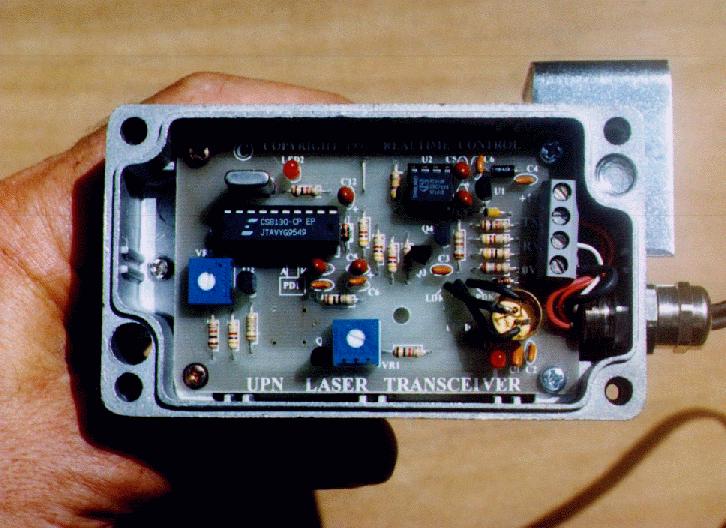
The following information is largely speculative. It is based on tests using other optical communications systems. Extended range tests using the UPNLT are intended, and will be reported here on completion.
The advantage of using lenses is a very substantial increase in range.
The disadvantages of using lenses are
The easiest way to increase range is to fit a convex lens in front of the photodiode, at a distance equal to the lens's focal length away from the diode. Lens quality is less important than for beam-expanding lenses, and a cheap plastic "magnifying glass" lens will dramatically increase range. A single 50 mm diameter plastic lens ahead of the photodiode can multiply the signal strength at the photodiode by a factor of 40, which should increase maximum range by a factor of 6.4 to about three kilometres. A 100 mm glass lens should increase maximum range to about eight kilometers. Alignment would probably require much care and patience, a sighting telescope and rigid screw-adjustable mounts.
The photo below is an experimental arrangement with a 2" glass lens ahead of the phototransistor, mounted in a piece of plastic pipe. The screws through the flange of the pipe allow alignment of the transmit beam and the receive focus.

The calculated range of this arrangement is more than 4 km. It has yet to be tested at this range. Tests at shorter ranges using an attenuated source have confirmed that the lens increases the range by a factor of about 9.
The photo below shows the laser diode mounted through the PCB in this transceiver. The photodiode is behind the board.

Useful (if rough) approximations for estimating the benefit from a receiver lens are:
The SFH213 photodiode supplied has an integral lens which focuses incoming parallel light onto the photosensitive area. It can not focus all of the converging beam from an additional lens onto the photosensitive area, and is therefore not the best choice if an additional lens is used and optimum performance is required. A BPW34 should be used in place of the SFH213, as it has no integral lens. Repositioning or rotation of the photodiode and laser diode may be necessary to ensure light from the lens is not obstructed by the PCB. Repositioning of the laser diode is necessary if a receiver lens larger than 65 mm diameter is used. Lengthen the laser diode leads rather than the photodiode leads, as the latter are very sensitive to electrical interference.
A lens system in front of the laser diode can be used to expand the beam cross section. Minimum theoretical beam divergence is approximately proportional to the inverse of the initial diameter, so by using a beam expander lens arrangement a more intense beam reaches the receiver at long ranges. Alignment difficulties multiply proportionally. Good quality glass lenses are necessary. An additional advantage is that much higher powered laser diodes can be used without the MPE ("maximum permissble exposure") level being exceeded anywhere in the beam.
Much useful information on long distance free-space laser communications is available from the archives of laser@qsl.net which can be found via the K3PGP site.
NEXT: FAQ